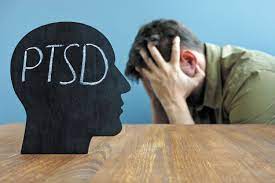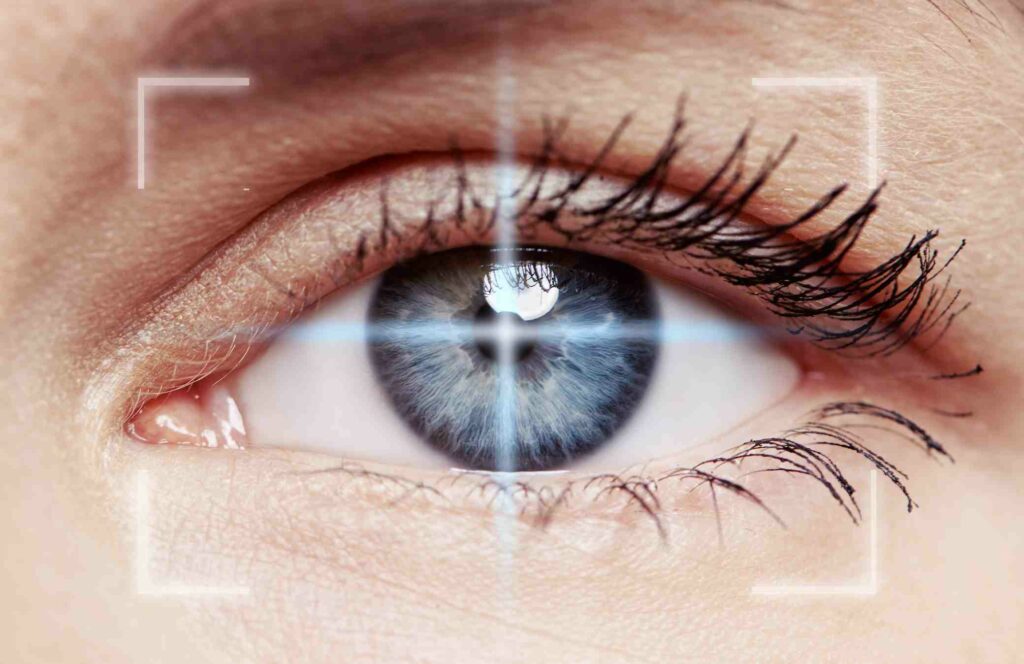Rapid eye movement (REM) therapy is a new and innovative approach to healing that is gaining in popularity. This type of therapy uses rapid, rhythmic eye movements to help the brain process emotional trauma. It has been shown to be an effective treatment for a variety of issues, including anxiety, depression, and post-traumatic stress disorder (PTSD). In this blog post, we will discuss the benefits of REM therapy and how it can help you heal from emotional trauma.
Contents
What Is Rapid Eye Movement Therapy?
 Rapid eye movement therapy is described as a form of therapy that uses eye movements to help heal emotional trauma. The therapist will guide the patient’s eyes in a specific pattern while the patient is asked to recall a traumatic event. It is believed that this type of therapy can help the brain process and heal from trauma.
Rapid eye movement therapy is described as a form of therapy that uses eye movements to help heal emotional trauma. The therapist will guide the patient’s eyes in a specific pattern while the patient is asked to recall a traumatic event. It is believed that this type of therapy can help the brain process and heal from trauma.
This is developed by Francine Shapiro, who is the founder of Eye Movement Desensitization and Reprocessing (EMDR). The main aim of this therapy is to help patients process and heal from trauma. More often, it is used to treat post-traumatic stress disorder (PTSD).
It is also believed that rapid eye movement therapy can help with other mental health conditions such as anxiety, depression, and phobias. Rapid eye movement therapy is a relatively new form of therapy and more research is needed to confirm its efficacy.
However, this type of therapy is considered a promising treatment for those who have experienced trauma. If you are considering this type of therapy, it is important to find a qualified therapist who has experience in treating trauma. Also, it is important to understand that this type of therapy may not be right for everyone.
If you are considering rapid eye movement therapy, it is important to talk to your therapist about your goals and expectations. This type of therapy can be an effective treatment for trauma and other mental health conditions. However, it is important to understand that this type of therapy may not be right for everyone. Thus, work with a professional to choose the right option for you.
What Conditions It Can Treat?
Rapid eye movement therapy is considered an effective treatment for a number of conditions, including:
Anxiety disorders
Anxiety disorders are usually characterized by persistent, excessive, and irrational fear or worry. Common types of anxiety disorders include generalized anxiety disorder (GAD), panic disorder, and social anxiety disorder. With this rapid eye movement therapy, you can help ease your anxiety and improve your quality of life. In fact, one study has found that 83 percent of people with GAD who underwent this therapy reported a significant reduction in their symptoms.
Post-traumatic stress disorder (PTSD)
 PTSD is a type of anxiety disorder that can develop after experiencing or witnessing a traumatic event, such as a natural disaster, car accident, or violent attack. People with PTSD may experience flashbacks, nightmares, and intrusive thoughts. They may also feel numb, disconnected, and irritable. Rapid eye movement therapy has been found to be an effective treatment for PTSD, with one study finding that 79 percent of people with the condition who underwent the therapy reported a significant reduction in their symptoms.
PTSD is a type of anxiety disorder that can develop after experiencing or witnessing a traumatic event, such as a natural disaster, car accident, or violent attack. People with PTSD may experience flashbacks, nightmares, and intrusive thoughts. They may also feel numb, disconnected, and irritable. Rapid eye movement therapy has been found to be an effective treatment for PTSD, with one study finding that 79 percent of people with the condition who underwent the therapy reported a significant reduction in their symptoms.
Depression
This condition is characterized by low mood, loss of interest or pleasure, fatigue, and other symptoms. While depression is often treated with medication and therapy, sometimes these treatments don’t work. This is where rapid eye movement therapy can help. It helps in relieving the symptoms of depression by providing a safe and effective way to release the emotions that may be causing it.
Obsessive-compulsive disorder (OCD)
OCD is basically an anxiety disorder that is marked by repetitive and unwanted thoughts (obsessions) and/or behaviors (compulsions). People with OCD often have both obsessions and compulsions. In this, a person with OCD will often engage in repetitive behaviors (compulsions) in an attempt to rid themselves of the obsessive thoughts. However, these compulsions only serve to temporarily relieve the anxiety and are not actually effective in getting rid of the obsession.
So, these are some most common conditions that can be treated by Rapid Eye Movement Therapy. As you can see, this therapy can be extremely beneficial for those who suffer from conditions like OCD and PTSD. If you think you may benefit from this therapy, please don’t hesitate to reach out to a qualified therapist today.
How Does It Work?
 It is believed that this therapy works by helping to access and process emotionally-charged memories and events that may be trapped in the subconscious. The theory is that by bringing these buried experiences to light, they can be processed and released, providing relief from symptoms.
It is believed that this therapy works by helping to access and process emotionally-charged memories and events that may be trapped in the subconscious. The theory is that by bringing these buried experiences to light, they can be processed and released, providing relief from symptoms.
During the therapy session, patients are usually asked to lie down on a comfortable surface with their eyes closed. They will then be asked to focus on a certain memory or event while the therapist guides their eyes in a specific pattern. Also, in a session, a therapist is generally only working with one patient at a time.
For example, if a patient is working on a memory of a traumatic event, the therapist may ask them to focus on the Visual images associated with that memory while moving their eyes rapidly from left to right. The therapist may also incorporate other senses into the session such as smells or sounds that were present during the original event.
It is thought that by re-experiencing the event while simultaneously stimulating eye movement, patients are able to process and release emotions that may be trapped in their subconscious. In this way, they will more likely to see a reduction in symptoms related to their condition.
If you are considering this type of therapy, it is important to consult with a mental health professional who is trained in its use.
What Are The Benefits?
There are several benefits of rapid eye movement therapy. Let’s discuss some of the most common ones.
Heals from trauma
This is one of the most common benefits cited by people who have undergone the therapy. It can help you heal from trauma by reprocessing the memories and emotions associated with it. This can lead to a reduction in symptoms such as anxiety, depression, and flashbacks. In fact, a study found that 83% of people who underwent the therapy no longer met the criteria for PTSD.
Improves sleep
Another common benefit of rapid eye movement therapy is improved sleep. This is because the therapy can help to reprocess any negative memories or emotions that may be causing you to have difficulty sleeping. In fact, a study found that 71% of people who underwent the therapy reported improved sleep.
Reduces stress and anxiety
Stress and anxiety seem to be a part of most people’s lives these days. Thankfully, rapid eye movement therapy can help to reduce these symptoms. One study found that after just one session of the therapy, participants had a decrease in stress and anxiety levels. As it works to reprocess any negative memories or emotions, the therapy can help to reduce your overall stress and anxiety levels.
Increased ability to cope with difficult life events
 It is essential thing that we all have the ability to cope with difficult life events. When something happens that is too much for us to handle, our natural tendency is to shut down emotionally. This can lead to a whole host of problems, both in the short and long term. Rapid eye movement therapy has been shown to be an effective way of helping people deal with difficult life events. It can help you to process what has happened, understand it better, and find ways to cope with it.
It is essential thing that we all have the ability to cope with difficult life events. When something happens that is too much for us to handle, our natural tendency is to shut down emotionally. This can lead to a whole host of problems, both in the short and long term. Rapid eye movement therapy has been shown to be an effective way of helping people deal with difficult life events. It can help you to process what has happened, understand it better, and find ways to cope with it.
Improved mental and emotional well-being
One of the most important benefits of rapid eye movement therapy is that it can improve your mental and emotional well-being. In fact, according to studies, it is just as effective as antidepressants in treating depression. It can also help to reduce anxiety, improve sleep, and increase energy levels.
So, overall the benefits of rapid eye movement therapy are numerous and can be extremely helpful in healing from difficult life events. If you are struggling to cope with something that has happened, consider seeking out a therapist who offers this type of therapy. It could be the key to helping you heal and move on.
Are There Any Limitations Of Rapid Eye Movement Therapy?
It is believed that almost anyone can benefit from REM therapy, regardless of the issue they are struggling with. That being said, there are a few exceptions.
For example, people who have not yet recovered from a traumatic experience may find that REM therapy dredges up too many difficult emotions. In these cases, it is best to wait until you have processed the trauma before starting REM therapy.
It is also not recommended for people who are pregnant or have a history of seizure disorders. If you are unsure whether or not REM therapy is right for you, be sure to consult with your doctor or therapist first. Because it is such a new field, there is not a lot of research on its long-term effects.
REM therapy shows a lot of promise, but more studies need to be done to determine its true efficacy. Some of the common side effects that one can face are:
- Dizziness
- Nausea
- Headache
- Fatigue
- Increase in memories of the trauma
These side effects are generally mild and go away after a few sessions. More serious side effects are rare but may include:
- Anxiety
- Paranoia
- Hallucinations
Generally, this therapy type is safe and poses little risk to the patient. However, as with any new therapy or medication, it is always best to consult with your doctor first. REM therapy is a promising new treatment for a variety of issues, but more research needs to be done to determine its long-term efficacy.
How To Find The Right Therapist?
 When you are sure to consider rapid eye movement therapy, it is important to find the right therapist. This type of therapy is not for everyone. And you want to be comfortable with the person who will be helping you through this process. There are a few things to keep in mind when looking for the right therapist:
When you are sure to consider rapid eye movement therapy, it is important to find the right therapist. This type of therapy is not for everyone. And you want to be comfortable with the person who will be helping you through this process. There are a few things to keep in mind when looking for the right therapist:
Look online
You can research therapists in your area online. This can give you a good starting point to find someone who is qualified to help you. In fact, these days it is easier than ever to find reviews of businesses and services online, so you can get an idea of what others have thought of their experience with a particular therapist.
Ask around
If you know someone who has gone through rapid eye movement therapy, ask them for a recommendation. This can be a great way to find someone with who you will be comfortable working. More often, when you ask for referrals to your family and friends, you will more likely to get good results.
Check credentials
When you have a few therapists in mind, be sure to check their credentials to make sure they are qualified to help you. This is an important step in finding the right therapist for you. Because there are a number of ways to become a therapist, you want to be sure that the one you choose has the proper credentials.
Ask their treatment approach
Even in rapid eye movement therapy, there are different approaches a therapist can take. Some may be more hands-on while others may prefer to let you talk through your experience. When you are considering a therapist, be sure to ask about their approach so you can be sure it is the right fit for you. Eventually, this will impact the success of your therapy.
Check reviews and experience
This is another important factor to consider when looking for the right therapist. You want to be sure that the therapist you choose has good reviews and experience. This will give you a better idea of what you can expect from your therapy sessions. In fact, people believe that the success of therapy greatly depends on the therapist’s experience.
Check with your insurance
Many insurance companies will cover rapid eye movement therapy if it is deemed medically necessary. Be sure to check with your insurance provider to see if they cover this type of therapy. This is important because therapies can be expensive and you want to make sure you are getting the most out of your insurance coverage.
Make sure you feel comfortable
It is important to feel comfortable with your therapist. This is someone you will be sharing intimate details of your life with, so you want to be sure you feel comfortable with them. If you don’t feel comfortable, it will be difficult to open up and get the most out of therapy. In fact, if you don’t feel comfortable, you may want to consider finding a different therapist. For example, if you are considering a male therapist but feel more comfortable with a female therapist, don’t be afraid to make the switch.
Take your time
 Don’t feel like you have to rush into therapy. This is something that will take time and you want to be sure you are ready before beginning. You may want to interview a few therapists before you make a decision. This will help you get a better idea of what to expect and allow you to find the right therapist for you. Also, if you are not ready to begin therapy, that is okay. You can always take your time and start when you are ready.
Don’t feel like you have to rush into therapy. This is something that will take time and you want to be sure you are ready before beginning. You may want to interview a few therapists before you make a decision. This will help you get a better idea of what to expect and allow you to find the right therapist for you. Also, if you are not ready to begin therapy, that is okay. You can always take your time and start when you are ready.
All in all, it is important to do your research when you are looking for a rapid eye movement therapist. This type of therapy can be very beneficial, but only if you find the right therapist for you. Be sure to keep these tips in mind and you will be sure to find someone who can help you heal.
Conclusion
To conclude, rapid eye movement therapy is defined as a type of therapy that uses eye movements to help patients heal from trauma. While the research on this topic is still relatively new. There is some promising evidence that suggests that rapid eye movement therapy can be an effective treatment for PTSD and other psychological disorders. If you are considering this type of therapy, be sure to speak with a qualified mental health professional to see if it is right for you.
Moreover, if you are struggling to find the right therapist then contact Mantra Care for assistance. With years of experience in the field, we can help you connect with the right mental health professional for your needs. We understand how important it is to find the right fit and will work with you to ensure that you are matched with a provider who meets your specific requirements. You can also book an online therapy or download our free Android or iOS app.


